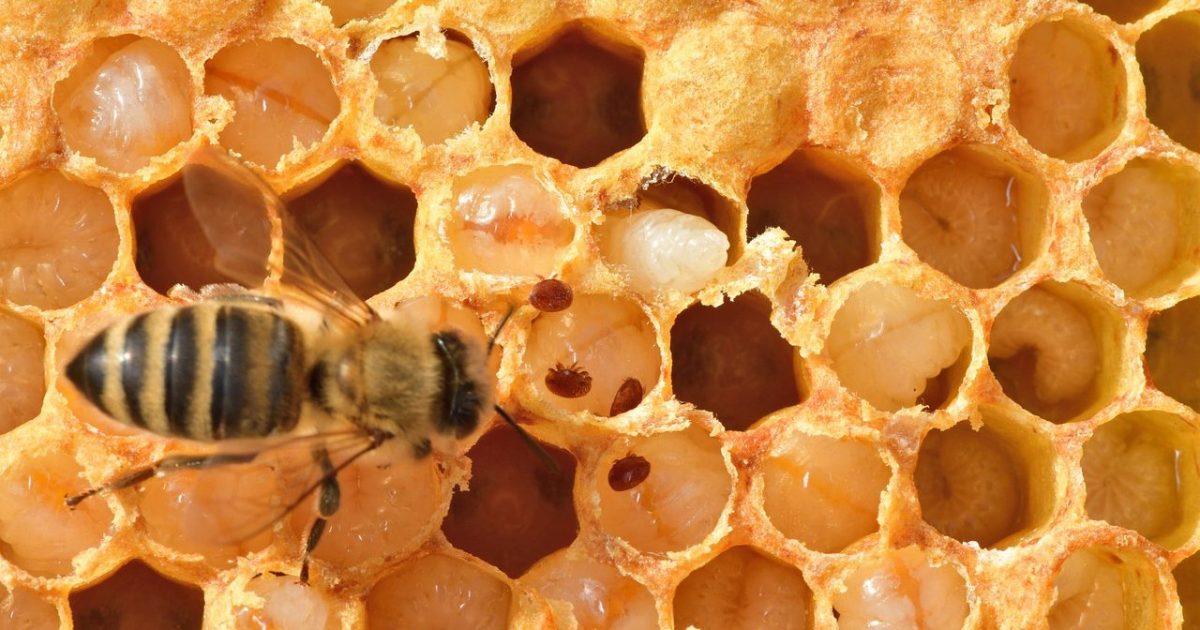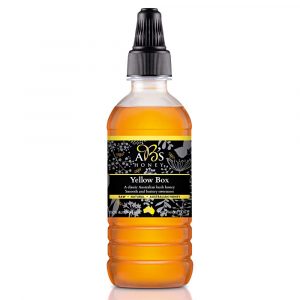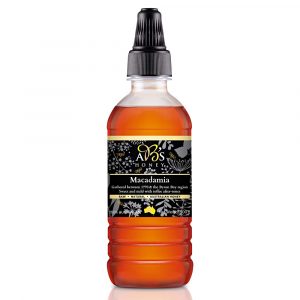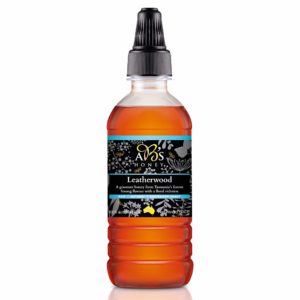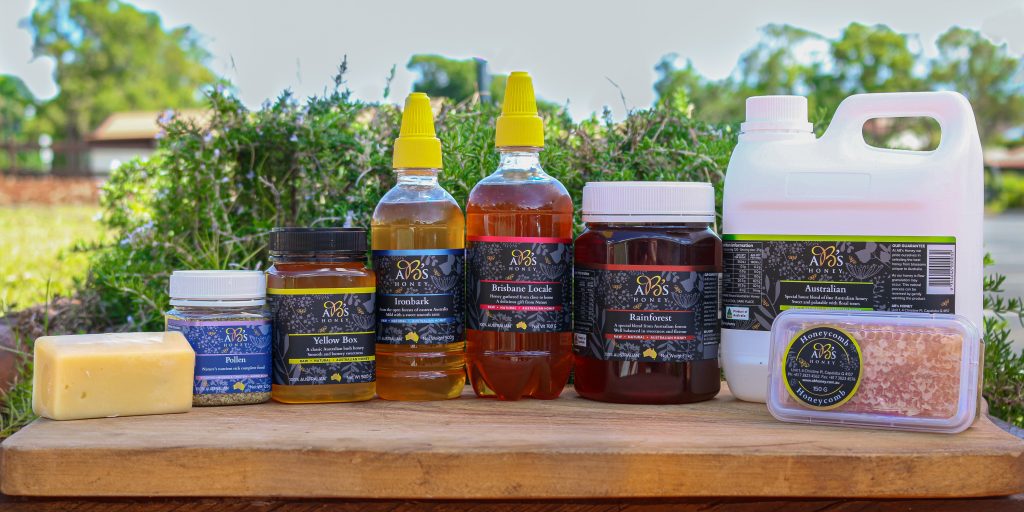Australia was one of the few countries in the world to be free from the presence of varroa mite. The mite is destructive to bees and hives, and Australia’s varroa-free status was something to be proud of and to protect. Unfortunately, in June 2022, the news that every beekeeper dreaded to hear broke. Varroa mite has been detected on our shores. But what is varroa mite, and why is its presence worthy of concern? This article introduces you to Varroa destructor, its impact on honeybees, and what you can do to help.
At the time of writing, varroa mite is NOT established in Australia. Authorities and beekeepers are working hard to contain and eradicate the mite before it can spread and become a permanent threat.
How varroa mite affects bees
The varroa mite is a parasite. It is a serious pest to bee colonies around the world. It carries up to twenty different viruses that can affect the health of the hive, leaving bees with a crippled wing deformity and unable to fly or forage for food. If an infestation takes hold in a hive, it can kill the whole colony.
The mites are small, about 1.1 – 1.7mm. Females are reddish-brown in colour, and the smaller males are yellowish-white. Male varroa mites are only ever seen in the larval cells of honeycomb. It is the female mite that travels and is transmitted through hives. Female mites can leave one hive on the back of a bee, then wait on a flower for a new bee to arrive, hitching a ride back to its hive to start the breeding and infestation process again.
When the female mite hitches a ride back to the hive on a bee, it drops off and makes its way to the brood comb where the larvae are. She will hide in the larval comb cell until it is capped with a layer of wax, and then begin laying her eggs and feeding off the pupae. The varroa mite can lay up to 6 eggs in the time it takes for the larva to develop into a bee and leave the cell. The first egg is male, and all subsequent ones female. Males only live for a short while, and their sole purpose is to impregnate the females before they leave the comb.
This video by the NSW Department of Primary Industries (DPI) is a great resource that explains the lifecycle of the mite and its devastation to hives.
How was varroa mite detected in Australia?
The Australian beekeeping industry and government bodies has practices in place to detect pest arrivals that can threaten Australia’s biosecurity.
Sentinel hives are placed in areas where invasive species are likely to arrive, for example, at ports and freight storage areas.
The sentinel hives are checked regularly for unwanted arrivals, working as an early warning system. The discovery of mites in sentinel hives in Newcastle, NSW, triggered an emergency biosecurity response.
What happens if varroa mite becomes established in Australia?
Bees are important for far more than just making honey. Beekeepers move their hives across Australia to pollinate vital crops and food sources. Bees are by far the most effective pollinators of many of our fruits, vegetables, and nuts. Without bees, production would drop, and prices go up.
Bees also pollinate clover and lucerne, which is vital to the livestock industry.
Did you know?
- Australia’s food security depends heavily on a healthy honey bee population. Around 65% of Australia’s agricultural production relies on bee pollination.
- The largest movement of livestock in Australia is the annual movement of beehives to Victoria’s almond orchards every August.
If varroa mite becomes established in Australia, it could cost the honey bee industry $70 million a year in lost revenue and destroyed hives. The loss of pollination services to the agricultural and horticultural industries could cost up to $14.2 billion annually*.
The impact to the cost of living and inflation would be catastrophic.
*source: Financial Review, 29 June, 2022.
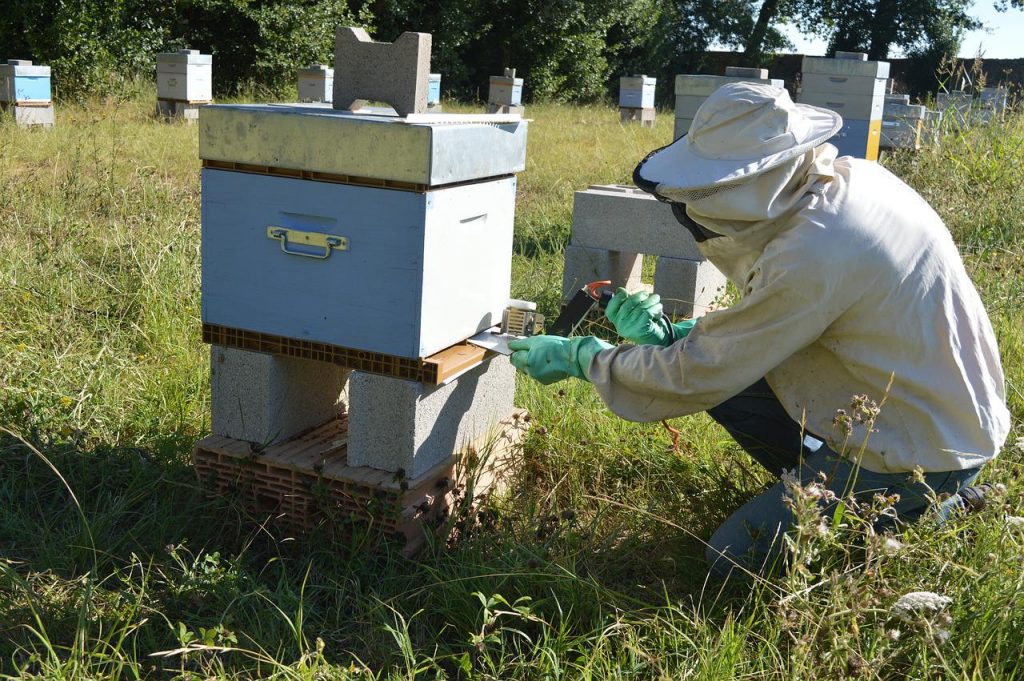
What is the government doing about it?
The government immediately enacted an emergency response when varroa mite was detected in the sentinel hives. Eradication zones were established for a 10km radius of mite detection sites. Sadly, destruction of affected hives is the only way to prevent those mites from spreading.
Surveillance zones are established within a 25km radius of a varroa mite detection. Authorities and local beekeepers in these areas are on high alert. Hives – including colonies of feral bees – are regularly inspected for mites.
Biosecurity zones are established within 50km of mite detection. Beekeepers in this area must notify the NSW DPI immediately if mites are detected, and the location of all their hives – with or without mites – is recorded and monitored.
The NSW DPI, Australian Honey Bee Industry Council (AHBIC), other government bodies, and beekeepers are working hard to contain and eradicate the mite before it can become established. A compensation scheme has been put in place to encourage reporting and compensate beekeepers for the loss of destroyed hives.
What you can do to help Australian Beekeepers
There are several ways you can help the Australian beekeeping industry:
Report feral hives
If you live within an established varroa mite biosecurity zone (see map here for latest updates), you can help by reporting the location of feral hives to Exotic Plant Pest Hotline on 1800 084 881, or by using the online form at www.dpi.nsw.gov.au/varroa.
A feral hive is a hive that a beekeeper has abandoned, or that has been moved by floodwaters and not reclaimed, or a wild colony of bees, e.g., a colony of bees located in a tree stump.
Please do not harm the bees; leave inspection and hive management to the experts. If they have no mites, authorities will allow them to continue their important work whilst being monitored.
Share information
Raise awareness by sharing this story, and the information from the NSW DPI, with friends and family.
Start a conversation in school
Encourage children to start a conversation with their teachers about the impact of varroa mite. This varroa mite resource for schools has been developed by NSW DPI. It’s perfect for investigative school projects at primary and middle school levels.
Support Aussie beekeepers
You can also continue to support the Australian honey bee industry by continuing to buy 100% Australian honey from Australian beekeepers. Varroa mite is not present in honey.
Pure Australian honey from Australian beekeepers
Further reading:
You might also enjoy…
